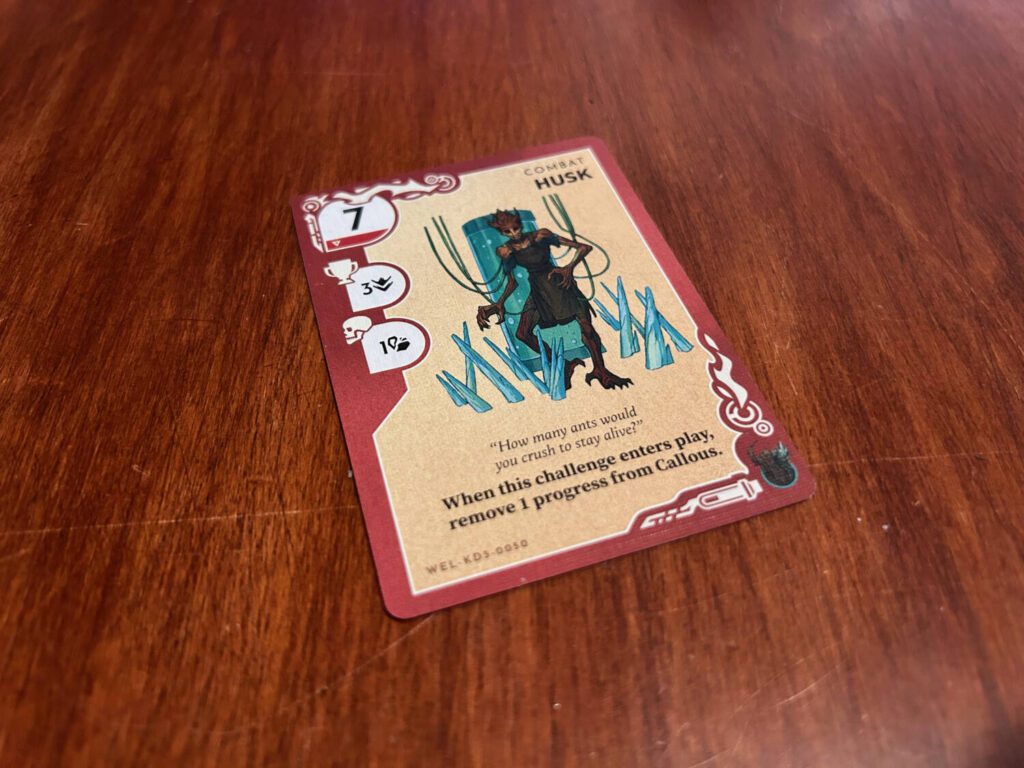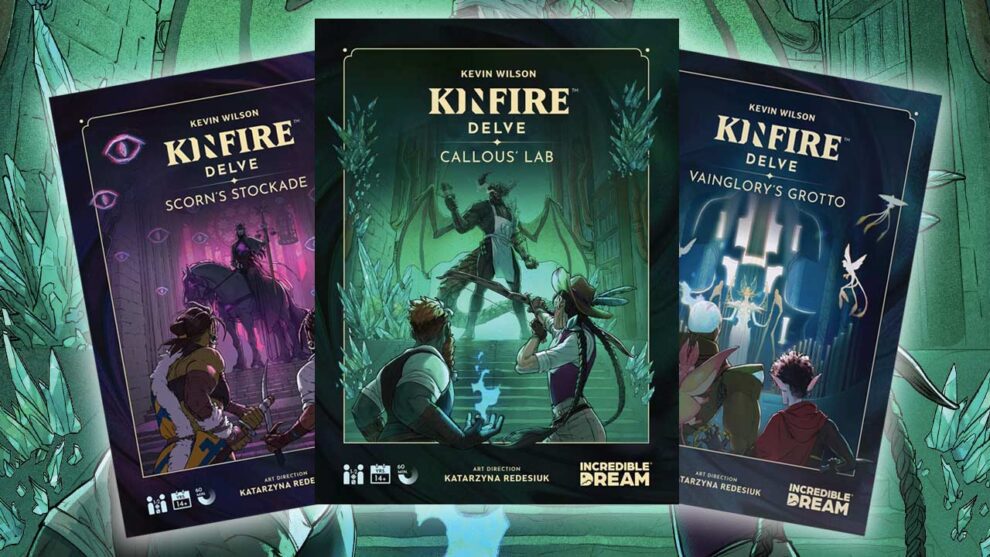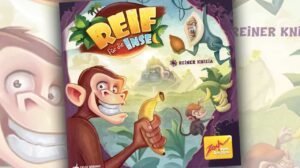Disclosure: Meeple Mountain received a free copy of this product in exchange for an honest, unbiased review. This review is not intended to be an endorsement.
At this point in my reviewer’s life, three years into writing about games, I don’t often find that my first impression of a game is wrong. It may gain nuance, depth, or flavor, maturing like a wine, but the baseline opinion rarely changes. If I like a game at first blush, I will probably still like it four or five plays later. It’s possible I will like it more than I did at first (Arcs), or less (The Field of the Cloth of Gold), but the initial response holds. “Game good,” “game bad.” Whatever I was picking up on in my first play still holds true.
My first play of Kinfire Delve was not promising. The fundamental idea of the game is familiar to co-op and solo players: punch through a bunch of bad guys until you get to the big bad guy, then punch the big bad guy. It seemed like a perfectly competent but otherwise uninspired co-op dungeon diver. Play some cards, do some damage, keep track of cascading effects, nothing we haven’t seen before. I walked away unmoved. Nice cards, though. That spot-foiling on the back of the player decks? Hoo-ee, that is choice.
Then I played it again.
Maybe it was the heat. Maybe it was my teammate, who was entirely unfamiliar with these types of games and needed a lot of help. Maybe it was a solar flare. Who’s to say? All I know is my opinion of Kinfire Delve improved by leaps and bounds with a second play.
Players begins by selecting a deck. Every deck represents a unique character, with their own set of strengths and weaknesses. While the front of your deck’s Character card tells you that character’s ability, the back features a bold full-body illustration. They’re uniformly terrific. The characters look cool, with distinctive personalities. The illustrations, art directed by Katarzyna Redesiuk, immediately stand out.

In the middle of the table, you deal out four face-up Challenge cards from the Delve deck, which contains the challenges and events you have to overcome on your trip to the bottom of the well. They surround a facedown Boss. They don’t get revealed until you hit the bottom. While you know who the boss is, you don’t know which of three included varieties it will be.
A turn is simple. First, choose one of the Challenge cards on the table. If it’s an Event, you simply do what it says and then discard it. If it’s an Obstacle, Combat, Puzzle, or Trap, things get a little more involved. Each Challenge card has a color, indicating its weakness. Players can only attempt a Challenge by using cards of the matching color. I can’t use a red card to swing at a blue Challenge, that’s just science. The value of the card you play determines how much Progress you add to the chosen Challenge.
There’s more to it than that, of course. First of all, most cards in a given player’s deck have abilities in addition to their listed strength, and you need to take those into consideration. The other players can play a total of two cards to Boost your attack, using the stats at the bottom of the cards. One player alone seldom has the necessary strength to take down a challenge, so you need the help. On the other hand, card abilities don’t trigger when a card is used to Boost, so it may be in your interest to hold on to that card…who, exactly, is to say?
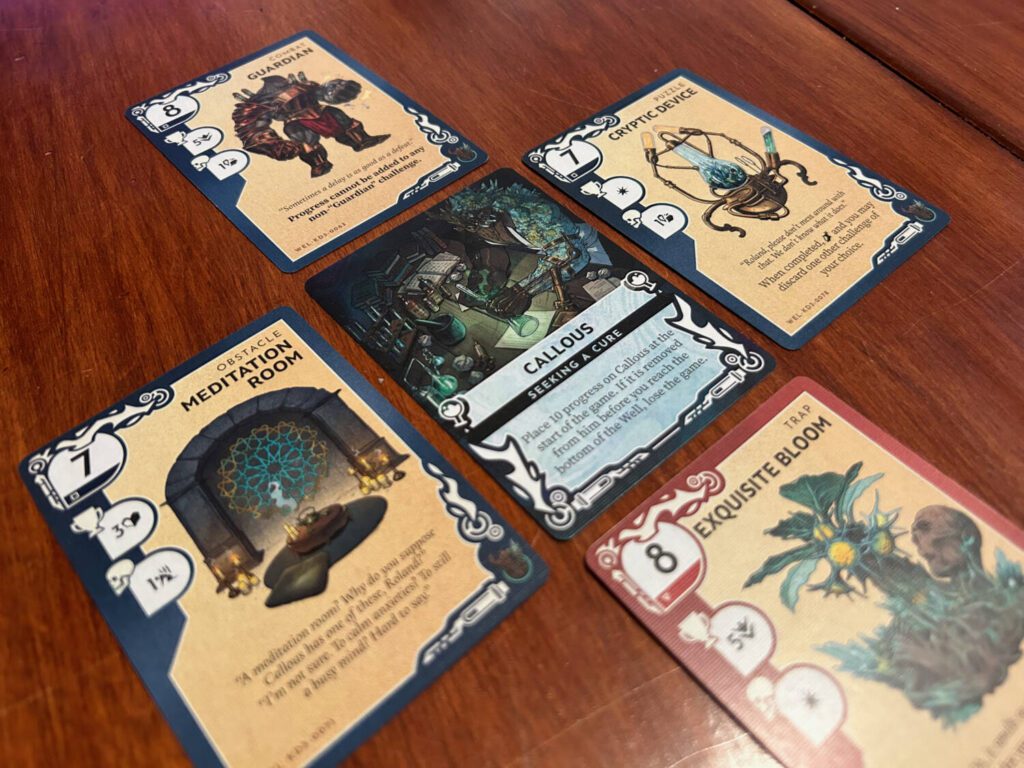
The choice of what Challenge to attempt is a loaded one. Many of them have static abilities that effect the game for as long as they’re in play, so you may want to focus on hammering away at one of those. On the other hand, each Challenge has a reward for completion and a penalty for unsuccessful attempts. It may be better to throw yourselves against a particularly malignant Challenge for two or three turns in a row despite the penalties for doing so.
I haven’t even mentioned the dice, which can end anywhere between 0 and 4 to your total for the turn. They are a masterstroke, adding just enough chance to make for dramatic moments without so much luck that more analytical players get frustrated. I wouldn’t like the game half as much without them.
Oh, and another choice that factors into everything: when to draw. Your hand doesn’t refresh. You have to refresh your hand at the start of your turn, but that invokes an Injury card which penalizes your whole team.
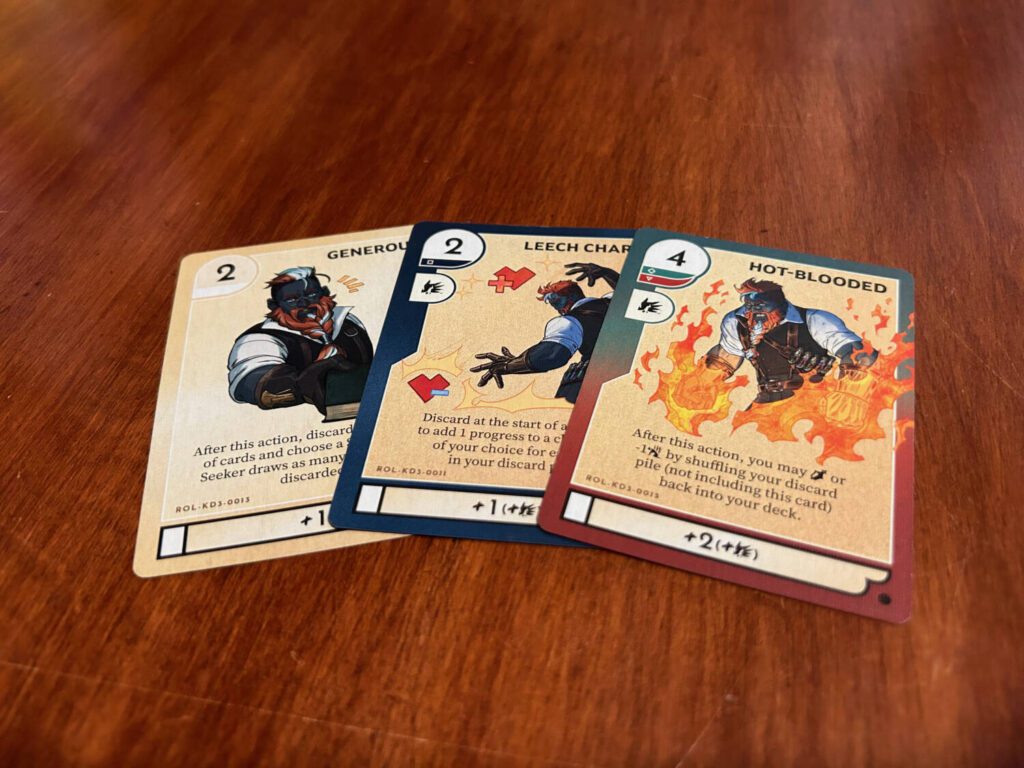
The three boxes in the series—Vainglory’s Grotto, Scorn’s Stockade, and Callous’ Lab (Benjamin Dreyer probably has some thoughts about that dropped “s”)—include both a unique big bad guy and a unique Delve deck, the stack of random bad guys you have to work your way through on the way down. They also come with two different Character decks. I’ve been impressed with the differences in feel between each installment, and I love switching up my Characters.
Despite an inauspicious beginning, Kinfire Delve has shown itself to be an excellent design. It’s a mechanically straightforward system that leads to a relatively complex—though never overwhelming—lattice work of decisions and consequences. It is also threads the difficulty needle perfectly. Every game feels like a nail-biter. Even a dominant run has numerous moments of moderate panic, the sign of a cooperative game done right.
Kinfire Delve isn’t doing anything radical, but designer Kevin Wilson has made sure it does what it does do just about perfectly.
